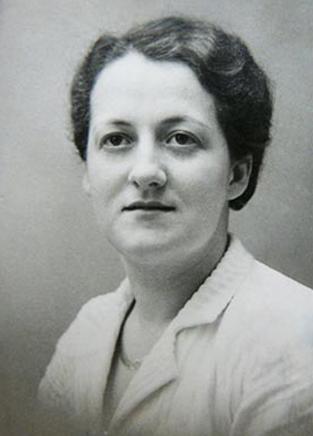Germaine Tillion

A leading figure in the French Resistance, an ethnologist and writer, Germaine Tillion drew lessons from her experience of World War II that served her throughout her entire life. At all times she managed to combine testimony, reflection and action.
Germaine Tillion was born on 30 May 1907 in Allègre in Haute-Loire. In 1919, the family moved to the Paris region. During the twenties, she began to study ethnology and obtained a scholarship to study the Berber population in the Algerian Aures region in 1933. Between 1934 and 1940, she stayed with the Chaouias for four long periods and continued to write her thesis.
Back in France, on 9 June 1940, after the Armistice, she decided that "something had to be done". In the company of Paul Hauet, a retired colonel, she began her resistance activities under the cover of an association to help prisoners of war, the National Union of Colonial Combatants. This cell came into contact with similar groups, such as the one at the Musée de l'Homme, bringing together other ethnologists with Boris Vildé at the head. It was in 1946, when Germaine Tillion took care of getting administrative approval for the network, that she gave it the name "Network of the Musée de l'Homme", in tribute to the majority of its founders. The Group had numerous activities: collecting information to be passed on to London, taking care of escaped soldiers or organising prison breaks, sheltering English paratroopers, making false ID papers, spreading calls to combat, eradicating traitors and Gestapo agents.
Even though she was a dedicated patriot, Germaine Tillion never forgot one guiding principle to which she adhered at all times: dedication to truth and justice. In a note to the underground press, she observed that a lot of information concerning the situation at the time was circulating in French society but was contradictory because it came from different sources. She directed her fellow resistants to not skew the truth, to not hide anything, to strive to understand and to judge impartially. "In terms of ideas, at the outset we only know one cause that is dear to us, that of our homeland, it is for love of it that we have come together, to try to preserve its faith and hope." But in no way, in absolutely no way do we want to sacrifice the truth to it, because our homeland is dear to us only on one condition, that we do not sacrifice the truth to it".
An initial denunciation led to the arrest of several members of the Musée de l'Homme cell; in April 1941, a second betrayal led to the arrest of its remaining members. They were tried a year later, in February 1942. Ten people, including several close friends, were sentenced to death. Germaine Tillion, who escaped these arrests, struggled to get them reprieved but in vain: the seven men in the group were shot and the three women deported. She herself was arrested in the street in August 1942 by the German police after being betrayed by a French priest posing as a resistant. Detained for more than a year in the French La Santé and Fresnes prisons, she was deported to the Ravensbrueck camp in October 1943. She was freed in April 1945.
After returning to France, she devoted most of her time to the history of the Resistance and Deportation and published several works on these themes. However, she did not neglect her civic commitments and took part in the campaign against the camps that is still in operation in the communist countries in Europe and Asia.
In 1954, she was sent by the French government as an observer to Algeria, where the insurgency was getting under way. At first, she proposed strengthening the education given to the indigenous population (boys and girls, children and adults) to enable them to emerge from the poverty that economic development had failed to stem. As the conflict intensified, in 1957, Germaine Tillion devoted all her efforts to mitigating the effects of the violence: she campaigned against torture, executions and met with FLN leaders to convince them to stop indiscriminate attacks.
Elected studies director at the Ecole Pratique des Hautes Etudes in 1958, she spent the following decades studying North African societies. She also published a new reviewed edition of Ravensbrück, her book about Deportation. She died on 19 April 2008 aged 100. Her autobiographical work, Fragments of Life, was published the following year.

